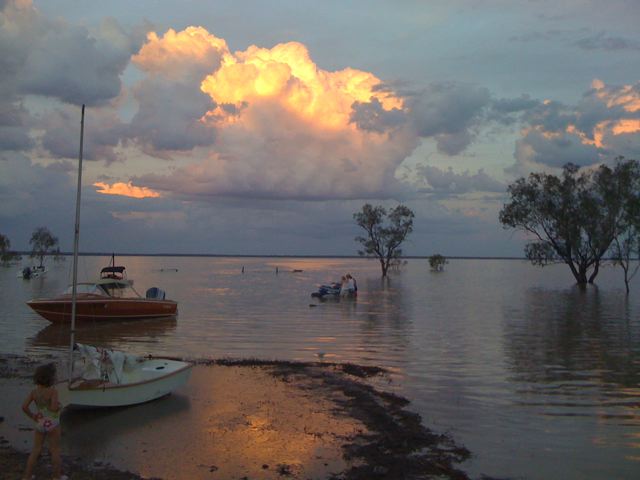On a map of the Lightning Ridge area, you will see a few kms
away on the other side of the highway that an extensive and unlikely body
of water is indicated, labelled ‘Coocoran Lake’. On my previous visits
this was merely a vast field of wheat and chickpeas. When I was there in
September 2009 checking on the bird life, even after some recent rain vehicles
rumbled across the ‘lake’ on the dusty track, and the odd emu or kangaroo
wandered dry-foot across its waterless expanse
(below).
Locals seriously believed that the ‘lake’ might never fill
again. To the north, along the Qld/NSW border, lay the three then-dry
distributaries of the water-plundered Balonne: the Bokhara, the Culgoa and
the Narran. Of those, the Narran received least flow. For Coocoran
to fill, the Narran would need to overflow and fill Angledool Lake, which in
turn would need to overflow and supply Weetalibah Creek, the source for
Coocoran Lake.

However, surprisingly, that is exactly what has happened and
the centre of the lake is now beneath 3 or more metres of water.
The truly remarkable thing is that the boats have returned (below).
But how on earth do they know that there is water in the lake? Do they
see the distant thunder-clouds far to the north? Do they sense a
change in the air as the humidity increases? Do they see other boats
circling high overhead? Perhaps they are responding to some instinct
that scientists do not understand, even now.
 m("web44806.mail.sp1.yahoo.com","1.3770239520");">
m("web44806.mail.sp1.yahoo.com","1.3770239520");">

